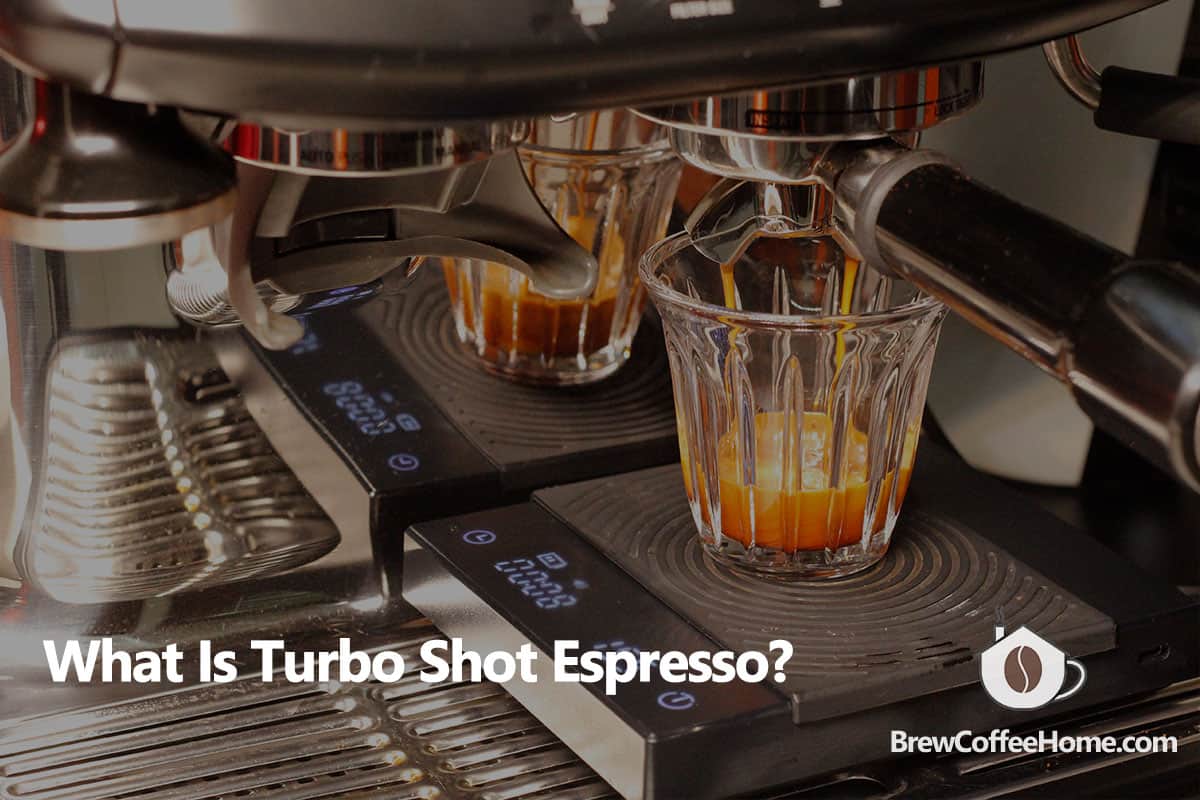The market for making espresso at home has made huge leaps over the years, with many innovations and changes taking place. One such development in the domestic barista scene is the turbo shot, a method introduced in the study “Systematically Improving Espresso.” [1]
Traditionally, espresso uses a fine grind, nine bars of pressure, and a 25 to 30-second brew time, resulting in a familiar rich and velvety shot. However, the turbo shot experiments with coarser grinds, lower pressure, and shorter brew times, delivering a vibrant coffee highlighting the espresso’s unique attributes.
In this article, I’ll examine if turbo shot espresso is worth pursuing and compare it with the traditional shot.
What Is A Turbo Shot Espresso?
A turbo shot is typically brewed at a 1:2.6 ratio instead of the more familiar 1:2 ratio. It also uses a coarser grind, 6 bars of pressure and quicker brew time, within 15 seconds. This is notably faster than the time it takes to pull a traditional shot of espresso, hence the name “turbo shot.”
If you use 15 grams of grounds, aim for a 40-gram yield in 15 seconds when dialing in. Alternatively, use a double-shot dosage of 17 grams of grounds and aim for a 51-gram yield in around 18 seconds.
Turbo Shot Grind Sizes
As I mentioned earlier, the turbo espresso uses a coarser grind than traditional espresso. This allows for more stable extraction, reducing the risk of channeling or choking, resulting in a more predictable and reliable espresso.
While any grinder can be used for brewing a turbo shot, the ideal ones are those with burrs that produce high uniformity in grounds and lack wider ranges of fines and boulders. Here is a list of our favorite espresso grinders.
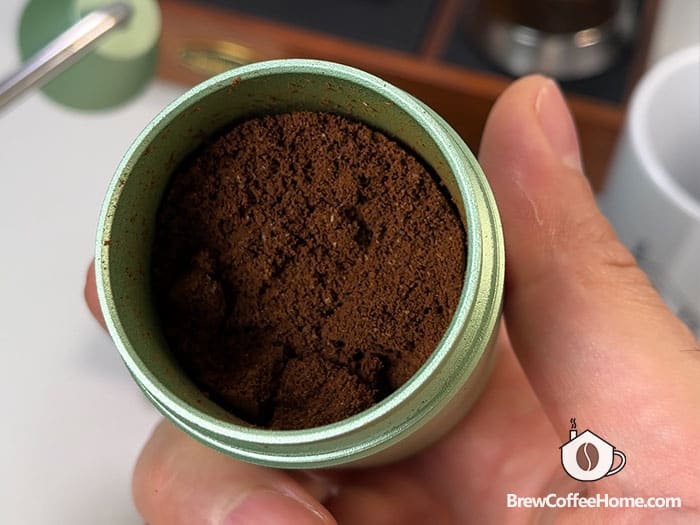
Brewing Turbo Espresso
What is the logic behind the 15-second brew time? The faster process, at around half the time of a traditional espresso shot, not only saves time but also helps to preserve and highlight unique coffee flavors, enabling espresso consumers to enjoy a brighter, less dense, and more complex espresso.
A slightly lower pressure of around 6 bars using a 1:3 ratio is recommended, too, as a lower dose of coffee (around 15 to 17 grams) and a higher brew ratio contribute to the turbo shot’s unique characteristics.
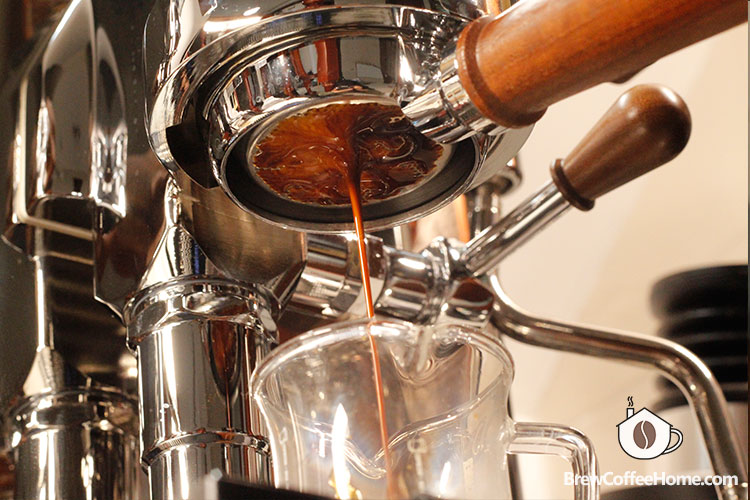
Turbo shot Espresso Extraction
With a turbo shot, more water flows through the coffee grounds. This results in a greater breakdown and extraction of soluble compounds from the coffee grounds.
It was confusing when I first heard of turbo shots because a shorter brew time and coarser grinds normally result in lower espresso extraction and, typically, an under-extracted shot.
However, water doesn’t pass through the tightly tamped puck evenly at a fine grind setting. When you opt for a coarser grind, water moves through all the grounds more easily. This means the turbo shot can achieve similar or even higher extraction yields to traditional espresso, even with a lower dosage and quicker contact time.
Pros & Cons – Is Turbo Shot Worth Trying?
Benefits Of Turbo Shot Espresso
One significant advantage of this technique is the increased consistency and repeatability. The coarser grind used in a turbo shot allows for a more stable extraction, reducing the risk of channeling or choking and leading to a more predictable and reliable espresso.
Puck preparation is also important, but it is more forgiving for the turbo shot.
As I’ve explained, the turbo shot takes approximately half the time to pull as a standard espresso shot. As well as the time-saving, this helps preserve and highlight the unique coffee flavors. This means coffee drinkers can enjoy a brighter, less dense, and more complex espresso, making it extremely satisfying as a straight shot.
Drawbacks Of Turbo Shot Espresso
There are a few drawbacks to the turbo shot. One is that it may not be the best choice for those who enjoy milk-based coffee drinks.
This is because traditional espresso shots tend to have a thicker texture that pairs better with milk, while the turbo shot can be thinner. While some people may still enjoy milk-based beverages with a turbo shot, it won’t offer quite the same creamy indulgence as those made with a traditional shot.
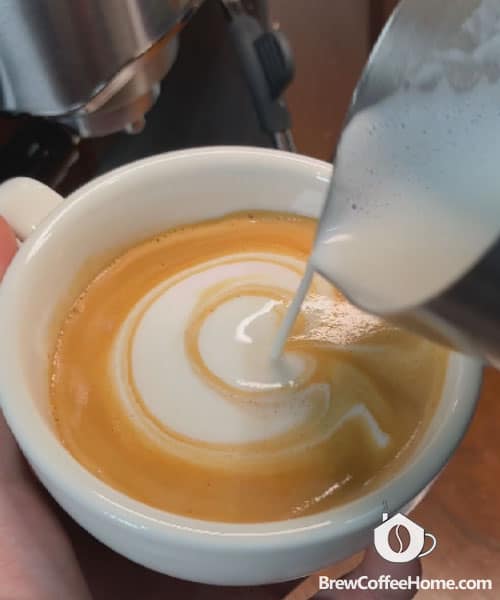
While you can use any coffee bean in a turbo shot, it’s worth noting that the technique particularly accentuates the lighter and fruity notes in the coffee – even if you’re using darker roast beans. Those who prefer darker roasted coffee with flavors like chocolate, nuts, or molasses may find that a traditional espresso shot better suits their palate.
Finally, and from experience, the turbo shot technique is wholly unsuitable for a bottomless portafilter as it’s liable to cause a mess. Cleaning the table is annoying since the espresso liquid will splash everywhere due to the quicker flow. For this reason, I always use a spouted portafilter when pulling a turbo shot.
About Traditional Espresso
Traditional Espresso Grind
When finding the ideal grind size for traditional espresso, the typical approach involves using finely ground coffee to resist water flow and create resistance for 9 bars of pressure.
This pressure level is historically related to the older lever machines and the belief that peak flow occurs around 9 bars.
Traditional Brewing Methodology
Traditional espresso brewing usually follows a specific set of guidelines. For example, it typically has a brewing time of 25 to 30 seconds and follows a 1:2 ratio.
This means that for every part of dry coffee used, there should be approximately two parts of espresso yield. For example, using 18 grams of coffee should produce approximately 36 grams of espresso.
This type of shot has a gooey texture, while its versatility lends itself to a range of beverages, including milk-based espresso drinks and Americanos.
Impact of Finer Grinds
While grinding coffee beans more finely exposes more surface areas of the coffee particles and thus increases extraction yield, it has become apparent that uneven extraction can occur.
Finer grinds create more resistance to water flow, leading to channeling in the coffee puck. This uneven water distribution through the coffee can lead to some areas of the puck being over-extracted while others remain under-extracted.
One way to combat the uneven extraction caused by the finer grinds in traditional espresso is to introduce longer pre-infusions at low pressure. Higher-end machines such as the Slayer or Lelit Bianca allow you to adjust the flow profiles for longer pre-infusion. Meanwhile, many mid-range espresso machines have a preset pre-infusion phrase. This is a useful feature. Therefore, if your espresso machine has it, use it.
Comparing Traditional And Turbo Espresso
Texture Differences
When comparing traditional and turbo espresso shots, a key difference lies in the texture of the coffee drink.
Traditional espresso produces a rich, thick texture that many know and love. On the other hand, turbo espresso shots yield a thinner texture with a less satisfying mouthfeel. While both beverages can be considered espresso, the differences in textures are pronounced, meaning the taste preferences of the individual need to be considered.
Flavor Profile
In terms of flavor, traditional espresso typically has a complexity that can sometimes mask the specific notes of a coffee.
However, turbo espresso shots bring out more vibrant and defined flavors in the cup. This can particularly appeal to those who enjoy drinking straight black espresso, as the turbo shot provides a more pronounced and defined coffee experience.
Impact On Milk Beverages
For those who enjoy adding milk to their espresso-based beverages, it is important to consider the impact of the espresso shot on the final drink.
With its thicker texture, traditional espresso often mixes better with milk to create a smoother and creamier drink.
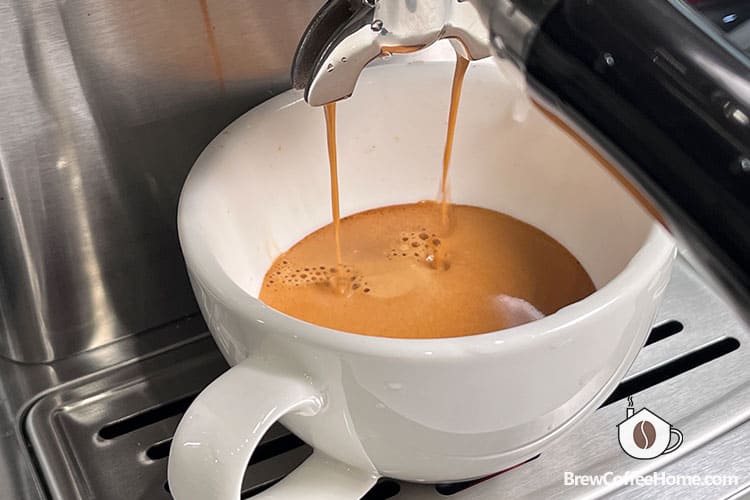
While some may argue that turbo shots provide a similar extraction and can be paired with milk, the thinner texture found in turbo espresso may not be as enjoyable when combined with milk and other products.
Therefore, those who consume milk-based espresso drinks might prefer sticking to traditional espresso shots.
Final Thought
While the turbo shot may not be everyone’s favorite as a standalone brewing method, it has inspired innovation and encouraged a more open-minded approach to espresso-making.
By adjusting various parameters, such as grind size and shot time, coffee enthusiasts can find their recipe that perfectly balances texture, intensity, and extraction, creating a personalized espresso experience.
As I mentioned earlier, using a coarser grind with a faster flow rate and a longer shot can lead to a more even extraction for a more vibrant and tasty espresso shot. However, there will be a sacrifice with the texture.
Nevertheless, if that’s what you’d prefer, you can try tweaking the variables to achieve a more textural and intense espresso shot with an even higher extraction yield.
FAQ
What Is A Dunkin’ Donuts Turbo Shot?
A Dunkin’ Donuts turbo shot is an extra shot of espresso added to any Dunkin’ drink to increase its caffeine content. It adds approximately 118mg of caffeine to drinks and is designed for those who need an extra caffeine boost. It’s not the same as the turbo shot discussed in this article.
References:
[1] Systematically Improving Espresso: Insights from Mathematical Modeling and Experiment – https://www.cell.com/matter/fulltext/S2590-2385(19)30410-2
